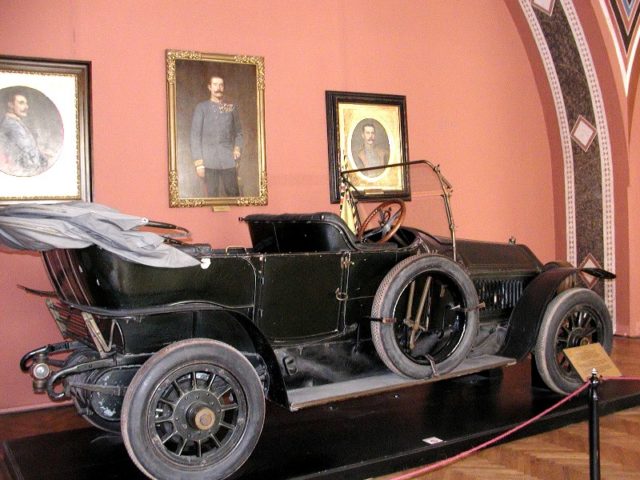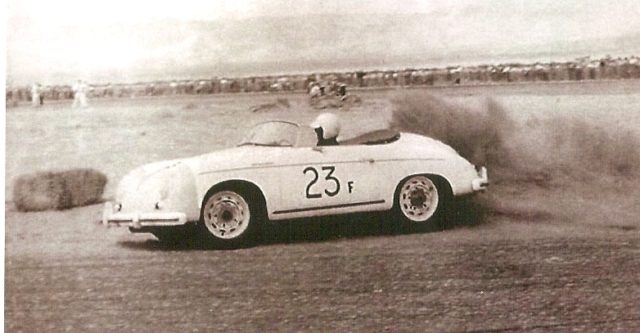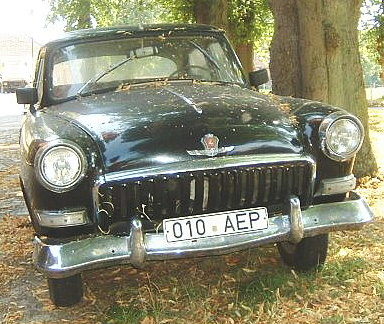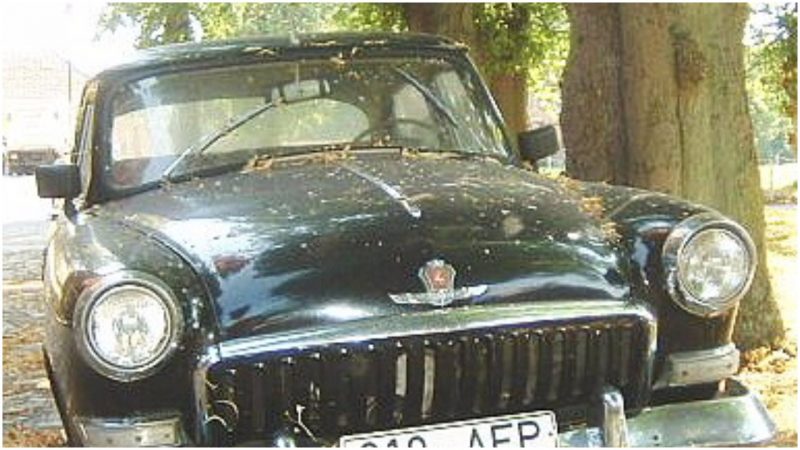The term “urban legend” became widespread in the 1980s after Jan Harold Brunvand, an English professor at the University of Utah, published a series of popular books named The Vanishing Hitchhiker: American Urban Legends and Their Meaning.
But we didn’t really need Professor Brunvard to tell us we love scary stories, and adore passing them on as “This one is true, you’ve got to believe me!”
With the emergence of Gothic literature in the late 18th century, horror stories became a favorite mode of entertainment. They revolved around haunted houses, ghost ships, and mysterious beings of unknown origin, and these tales heavily influenced the creation of the urban legends of the 20th century.
In the last century we’ve seen a rapid development of technology, and that technology became a key part of urban legends. For example: the car.
![As described by Spanish magazine “El Mundo Gráfico”: “The moment when the Austrian archdukes, following the first attempt against their lives, arrived at the City Council [of Sarajevo], where they were received by the mayor and the municipal corporation.”](https://www.thevintagenews.com/wp-content/uploads/sites/65/2017/06/800px-Minutos_previos_al_atentado_en_Sarajevo-640x457.jpg)
Since the 1910s, a number of urban legends have included supposedly haunted or cursed cars. The first such legend arose from the tragedy that officially started World War I: the murder of the Archduke Franz Ferdinand in 1914. At the moment when Franz Ferdinand was assassinated by Gavrilo Princip, he was traveling through Sarajevo in a grandiose 1910 Double Phaeton, a car manufactured by a company called Graf & Stift.
After the shooting of Franz Ferdinand, the car exchanged 15 owners over a 12 year period–and was, shockingly, involved in accidents that resulted in the deaths of 13 people. The car’s final accident happened when its last owner, a Romanian baron, swerved off the road while traveling to a wedding with his five friends. The Baron and his friends all perished in the horrific accident and the car earned the nickname “Death Car.” According to the legend, the poor car became cursed because it possessed a soul and, traumatized by the assassination of Franz Ferdinand, it went mad and wished to murder all of its future passengers.

Yet another popular urban legend surrounds a famous car connected to Hollywood: James Dean’s Porsche 550 Spyder, nicknamed “Little Bastard.” In early 1954, Dean purchased several powerful cars and wanted to develop a career in auto racing. He competed in several high-profile races in California and amazed spectators with his driving skills, but in May 1955, the Warner Brothers production company barred him from racing during the production of the film Giant.
When Giant entered post-production, Dean immediately wanted to return to racing. He purchased a powerful new Porsche 550 Spyder and was speeding to attend a racing event in Salinas, California, when he slammed into another car and died from numerous internal injuries.

The wreckage of the car was purchased by George Barris, a prominent designer and auto customizer, who restored the car and installed an entirely new engine. Nonetheless, the car has been involved in a series of accidents, on the street and on the racetrack; one accident even caused the death of a pedestrian. The car’s grim reputation spread across the world when it was reported to have spontaneously caught fire while parked in a garage and, on a different occasion, while being stored in a sealed container.
Nowadays, most researchers believe that the stories of the car’s spontaneous combustion were hoaxes that were engineered by George Barris to boost the car’s publicity. Still, no one can deny that the car was involved in a series of accidents. Also, Dean’s friend Alec Guinness, the famous actor who portrayed Obi-Wan Kenobi in the original Star Wars trilogy, reportedly warned Dean that the car might kill him.
Last but not least, the urban legend of the “Black Volga” originated in Poland in the 1960s and quickly spread throughout Eastern Europe and many parts of the Soviet Union. The legend involved a black Gaz Volga limousine that was reportedly haunted and used to abduct people.

Versions of the legend were popular at different times: some versions claimed that the Black Volga was driven by sinister priests and nuns, black-robed Satanists, vampires, or even Satan himself, and that it was used to abduct victims who were then sacrificed to evil spirits. Numerous alleged witnesses claimed that Black Volga had ram’s horns instead of wing mirrors. More recent versions of the legend claimed that the Volga was driven by thugs who abducted people to harvest their organs in order to sell them to rich Westerners or Arabs who suffered from terminal illnesses.
Although all versions of the legend were most likely fairy tales invented by the bored or the drunk, some people claim that the Black Volga still roams the cities of the ex-Soviet Union in search of fresh blood.
